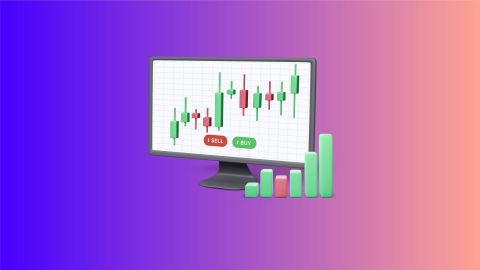In options trading, it is common for options contracts (both call and put options) to go out of the money (OTM) at expiration. This causes the option holder to lose the premium paid for the option while the option writer (seller) keeps the premium as profit. This worthless expiration of options contracts leads to the introduction of a concept called “max pain”. It signifies the price level where the maximum number of options contracts expire worthless and cause significant financial loss to traders.
Let us understand the meaning of max pain in detail and learn its calculation using simple examples.
What is max pain?
In the context of options trading, “max pain” represents the price point at which the maximum number of options contracts held by traders expire worthless. This kind of expiration causes financial pain or loss to the traders, which is appropriately highlighted by this term. It is pertinent to note that max pain arises when the options are out of the money (OTM) at expiration, meaning they have no intrinsic value.
How is the max pain calculated?
Max pain is calculated using the open interest data of options contracts. For those who are unaware, open interest represents the total number of outstanding options contracts that have not been:
- Closed
or - Exercised
While doing online trading, calculate max pain by first determining the strike price at which the total value of options contracts (both call and put options) would result in the maximum loss for options traders.
Let us understand the calculation through easy steps:
Step I: Gather the open interest data
- Collect the open interest data for both call and put options.
- Do this across various strike prices for the desired underlying asset (e.g., a stock or an index like Nifty).
Step II: Identify call and put options with the highest open interest
- Identify the strike price with the highest open interest for call and put options.
Step III: Determine the likely max pain levels
- Compare the open interest of call and put options at each strike price.
- Calculate the total value of options contracts (Premium x Open interest) for each strike price.
- Repeat the same process for all the strike prices.
- This will help you find the price level where the combined value of call and put options contracts is the maximum.
Step IV: Find the max pain point
- The strike price with the maximum combined value of call and put options contracts represents the “max pain” point.
Example showing the calculation of max pain
The data collection
- Say we are analysing Nifty options for a particular expiration date.
- We collect the open interest data for call and put options across various strike prices.
- After gathering the data, we identify the strike prices with the highest open interest for both call and put options.
- Call option open interest
- Strike price 15,200: 10,000 contracts
- Strike price 15,100: 12,000 contracts
- Strike price 15,000: 14,000 contracts
- Put option open interest
- Strike price 14,800: 11,000 contracts
- Strike price 14,900: 13,000 contracts
- Strike price 15,000: 15,500 contracts
- Call option open interest
- Assume that:
- Nifty is currently trading at 15,000
- The premium for each option contract is Rs. 100
The comparison
Now, for each strike price, we will:
- Calculate the total value of options contracts (premium x open interest)
and then - Compare the open interest of call and put options
The total value of options contracts at:
- 15,200 strike (Call): Rs. 10,00,000
- 14,800 strike (Put): Rs. 11,00,000
- 15,100 strike (Call): Rs. 12,00,000
- 14,900 strike (Put): Rs. 13,00,000
- 15,000 strike (Call): Rs. 14,00,000
- 15,000 strike (Put): Rs. 15,50,000
We can observe that the total value of both call and put options contract at 15,000 strike price is Rs. 29,50,000 (Rs. 14,00,000 + Rs. 15,50,000)
The max pain point
- At the strike price of 15,000, the maximum combined value of call and put options contracts is the maximum.
- Hence, the max pain point for Nifty options would be at a strike price of 15,000.
- This indicates that at 15,000:
- A maximum number of options contracts would expire worthless
and will - Cause the most financial "pain" to options traders
- A maximum number of options contracts would expire worthless
Is max pain a theoretical concept
Yes, max pain is often regarded as a theoretical concept in options trading. It is based on the assumption that options traders collectively aim to:
- Maximise their profits
and - Minimise their losses
However, whether this collective effort truly happens in practice is debatable. It is important to recognise that markets are not always perfectly efficient. Market participants may not always behave predictably, and unexpected events can lead to deviations from max pain levels.
Furthermore, max pain calculations focus solely on open interest data. It doesn't take into account other factors, such as:
- Market sentiment
- News events
- Institutional trading activity
This overreliance on open interest also makes max pain a “lagging indicator.” That is because open interest data reflects past trading activity, and by using it, we cannot accurately predict:
- Future market movements
or - The actual price at which an underlying asset will settle at expiration
Conclusion
Max pain in options trading represents the price point where the maximum number of options contracts expire worthless or have zero intrinsic value. Most options traders bear significant financial loss at this point. While it is calculated using open interest data, it is theoretical and assumes traders aim to maximise profits and minimise losses collectively. However, whether this collective effort truly occurs is debatable. Furthermore, max pain calculations ignore critical factors like market sentiment, news events, and institutional trading activities. Thus, traders should consider its limitations and use it alongside other technical indicators to make informed trading decisions.
Do you wish to expand your trading knowledge? Learn more about intraday trading and margin trading today.




